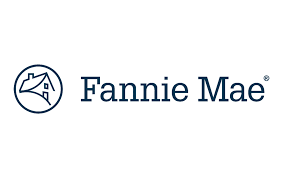Fannie Mae vs. Freddie Mac: What’s the difference?




Key takeaways
- Fannie Mae and Freddie Mac are government-sponsored enterprises that aim to provide the mortgage market with stability and affordability.
- They are major players in the secondary mortgage market, buying loans from lenders and either keeping them or repackaging them as mortgage-backed securities.
- Fannie Mae and Freddie Mac were both created by Congress but have different intended purposes and loan-sourcing methods.
As you explore your mortgage options, you’re likely to come across two names: Fannie Mae and Freddie Mac. Although you won’t directly get a home loan through these government-sponsored enterprises (GSEs) — private entities operating under a Congressional charter — they nonetheless have an impact on your getting a mortgage and its terms. Let’s take a closer look at these key players in the mortgage industry, and what distinguishes them.
What are Fannie Mae and Freddie Mac?
Fannie Mae and Freddie Mac are government-sponsored enterprises. Congress created both with the goal of adding stability and affordability to the country’s mortgage market. They also provide banks and mortgage companies with ready access to funds on reasonable terms, adding liquidity to the mortgage market.
Both agencies are major players in the secondary mortgage market. That is, their focus is buying loans from mortgage lenders, giving those institutions more capital to continue offering financing to other borrowers. Fannie Mae and Freddie Mac then either keep them or, more often, repackage them as mortgage-backed securities that can be sold to investors.
By acting as a market-maker — that is, constant buyer — they ensure liquidity in the lending world. As of 2025, Fannie Mae and Freddie Mac support around 70 percent of the mortgage market, according to the National Association of Realtors. That means the majority of conventional loans, those offered by private lenders, end up being backed or purchased by one of the two entities.
Though they set criteria for loans, neither Fannie Mae nor Freddie Mac originate or directly provide mortgages to homebuyers. Instead, you’ll get your loan from a mortgage lender, such as a bank, credit union or online lender, which can then choose to sell the loan to one of these GSEs, assuming the loan’s eligible.
Fannie Mae and Freddie Mac history
In 1938, the government created Fannie Mae, or the Federal National Mortgage Association, amid the struggles of the Great Depression. The goal of Fannie Mae was to create a more reliable source of funding for banks, opening doors for more Americans to become homeowners, figuratively and literally.
Freddie Mac, short for the Federal Home Loan Mortgage Corporation, came on the scene through an act of Congress in 1970, with a similar purpose of ensuring that there are reliable, affordable mortgage funds available nationwide.
Since 2008, Fannie Mae and Freddie Mac have been under the conservatorship of the Federal Housing Finance Agency (FHFA), though they remain separate entities with their own shareholders and leadership.
Both Fannie Mae and Freddie Mac played a role in the financial crisis by backing subprime mortgages, and when the housing bubble burst, they faced large losses and required government bailouts. After taking on more debt, they were placed under FHFA conservatorship to prevent insolvency, and have since repaid most of the bailout funds.
During the COVID-19 pandemic, the two GSEs provided mortgage relief, including forbearance, loan modifications, and a foreclosure and eviction moratorium.
Differences between Fannie Mae and Freddie Mac
While they may seem incredibly similar, Fannie Mae and Freddie Mac have some key differences. Here’s a closer look at what differentiates Freddie Mac from Fannie Mae.
| Differences | Fannie Mae | Freddie Mac |
|---|---|---|
|
Intended purpose |
Established to create a more reliable source of accessible funding for banks and mortgage companies. This resulted in more widely accessible and affordable mortgages for homeowner candidates. |
Created by Congress to expand the secondary mortgage market, purchasing loans that meet its standards from lenders. This enables lenders to make more loans available to buyer candidates. |
|
Loan sourcing |
Tends to purchase loans from larger commercial banks and mortgage lenders |
Often buys loans from smaller banks |
|
Lending requirements |
Low-down-payment programs require a minimum credit score of 620. Minimum 3 percent to 5 percent down payment required, depending on the loan program. |
Low-down-payment programs require a minimum credit score of 660 to 680, depending on the progrm. Minimum 3 percent to 5 percent down payment required, depending on the loan program. |
|
Key loan program |
Home Possible |
Similarities between Fannie Mae and Freddie Mac
Now that we’ve covered their differences, let’s touch on how Fannie Mae and Freddie Mac are similar.
| Similarities | Description | |
|---|---|---|
|
Creation and structure |
Created by Congress in 1938 (Fannie Mae) and 1970 (Freddie Mac) to address issues in the housing market. They exist today as publicly traded corporations under the conservatorship of the government. |
|
|
Loan purchasing and repackaging |
Buys loans from lenders and turns them into mortgage-backed securities, which reduces risk for lenders and helps lower interest rates for borrowers by creating stability in the mortgage market. |
|
|
Increase loan availability |
Buys loans from lenders, which increases the amount of money lenders can loan out; lenders can re-lend that money once they close a loan and sell it back to the GSE. |
|
|
Standardize loans |
Only buy loans that meet FHFA standards, including loan limits and borrower financial requirements, which lenders follow to sell mortgages to them. |
|
Who regulates Fannie Mae and Freddie Mac?
Fannie Mae and Freddie Mac are regulated by two government agencies: the FHFA and the U.S. Department of Housing and Urban Development (HUD). Along with HUD and FHFA oversight, the President of the United States appoints five of the 18 board members at each entity. Further details of the regulation for Fannie Mae and Freddie Mac are laid out in two government acts: The Federal Nation Mortgage Association Charter Act and the Federal Home Loan Mortgage Corporation Corporation Act.
What this means for you
Since you can’t take out a mortgage directly from Fannie Mae or Freddie Mac, why should you care about these big names in the mortgage market? In addition to keeping the mortgage market humming and making homeownership more accessible overall, here’s how they can affect you:
- They create more affordable financing options, including lower-down payment loan programs.
- They foster competition among lenders, leading to lower rates.
- They help set borrowing standards, influencing the qualifications you need to meet to obtain a mortgage.
To find out if you have a Fannie Mae- or Freddie Mac-backed loan:






